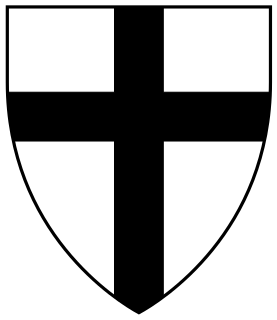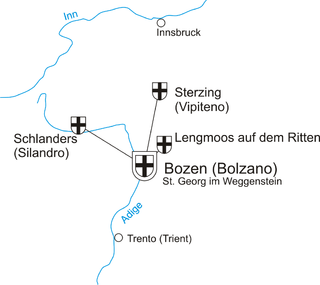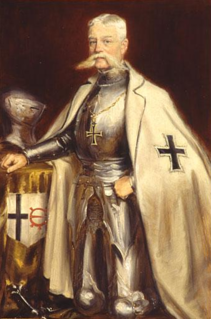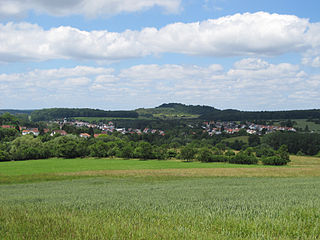 W
WThe Order of Brothers of the German House of Saint Mary in Jerusalem, commonly the Teutonic Order, is a Catholic religious order founded as a military order c. 1192 in Acre, Kingdom of Jerusalem.
 W
WThe Order of Brothers of the German House of Saint Mary in Jerusalem, commonly the Teutonic Order, is a Catholic religious order founded as a military order c. 1192 in Acre, Kingdom of Jerusalem.
 W
WThe State of the Teutonic Order, also called Deutschordensstaat or Ordensstaat in German, was formed by the knights of the Teutonic Order during the 13th century Northern Crusades along the Baltic Sea. The state was based in Prussia after the Order's conquest of the Pagan Old Prussians. It expanded to include at various times Courland, Gotland, Livonia, Neumark, Pomerelia and Samogitia. Its territory was in the modern countries of Estonia, Latvia, Lithuania, Germany, Poland, Russia and Sweden (Gotland). Most of the territory was conquered by military orders, after which German colonization occurred to varying effect.
 W
WAchziv is an ancient site on the Mediterranean coast of northern Israel, between the border with Lebanon and the city of Acre. It is located 13.5 kilometres (8.4 mi) north of Acre on the coast of the Mediterranean Sea, within the municipal area of Nahariya. Today it is an Israeli national park.
 W
WAn der Etsch und im Gebirge was a bailiwick (Ballei) of the Teutonic Order, created about 1260 and headquartered in Bolzano (Bozen), now in the Italian province of South Tyrol, comprising several commandries in the former County of Tyrol and the adjacent Bishopric of Trent.
 W
WThe Bailiwick of Utrecht of the Teutonic Order is a charity based in Utrecht, Netherlands. It originated in 1231 as a division of the order of Teutonic Knights. During the Protestant Reformation most of the members became Protestant, mainly Reformed or Lutheran. The Bailiwick cut its ties with the order based in the Holy Roman Empire and placed itself under the protection of the United Provinces of the Netherlands. The order was briefly suppressed during the Napoleonic era, but revived in 1815 after the restoration of the House of Orange. In 1995 it returned to the Duitse Huis as its headquarters, a building that dates from 1348.
 W
WThe Banderia Prutenorum is a manuscript of 48 parchment sheets, 18.6 by 29.3 cm, composed by Jan Długosz and illuminated by Stanisław Durink, listing 56 vexillae, or banners, of the Order of the Teutonic Knights. The title means Blazons of the Prussians. Prutenorum is the genitive plural of Pruteni, Prussians.
 W
WThe Order of Brothers of the German House of Saint Mary in Jerusalem, commonly the Teutonic Order, is a Catholic religious order founded as a military order c. 1192 in Acre, Kingdom of Jerusalem.
 W
WȚara Bârsei or the Burzenland is a historic and ethnographic area in southeastern Transylvania, Romania with a mixed population of Romanians, Germans, and Hungarians.
 W
WEschringen is a German village in the diocese of Speyer. Since 1974 it has been a part of Saarbrücken.
 W
WAl-Kabri was a Palestinian Arab town in the Galilee located 12.5 kilometers (7.8 mi) northeast of Acre. It was captured by the Haganah 21 May 1948, a week after the State of Israel was declared. In 1945, it had a population of 1,520 and a total area cultivated of 20,617 dunams. It is near the site of Tel Kabri.
 W
WThe Knights of the Cross or The Teutonic Knights is a 1900 historical novel written by the eminent Polish Positivist writer and the 1905 Nobel laureate, Henryk Sienkiewicz. Its first English translation was published in the same year as the original.
 W
WKunság is a historical, ethnographic and geographical region in Hungary, corresponding to a former political entity created by and for the Cumans or Kuns. It is currently divided between the counties of Bács-Kiskun and Jász-Nagykun-Szolnok; these correspond roughly to two distinct traditional entities, Little Cumania and Greater Cumania, which are longitudinally separated by the Tisza. Kunság and its subdivisions were first organized by the Kingdom of Hungary to accommodate semi-nomadic Cumans escaping from the Mongol Empire. The Cuman enclaves were sometimes incorporated with Jazygia, which was similarly set up and named for Ossetian nomads.
 W
WLandmeister in Livland was a high office in the Teutonic Order. The Landmeister administered the Livonia of the Teutonic Order. These lands had fallen to the Teutonic Order in 1237 by the incorporation of the former Livonian Brothers of the Sword. The seat of the Landmeister was castle Wenden. The Landmaster's function in Livonia lasted until 1561, when in aftermath of Livonian War the last Landmeister Gotthard Kettler relinquished the northern parts of the Mastery and in the Union of Vilna secularized the part still left to him and, as the Duchy of Courland and Semigallia, took fief from the Polish king and Grand Duke of Lithuania Sigismund II Augustus. The non-recognition of this act by Pope, Holy Roman Empire and the Grand Master of the Teutonic Order had no factual effect.
 W
WThis article is about depictions of the Teutonic Knights in popular culture.
 W
WUmm al-Faraj, was a Palestinian village, depopulated in 1948.